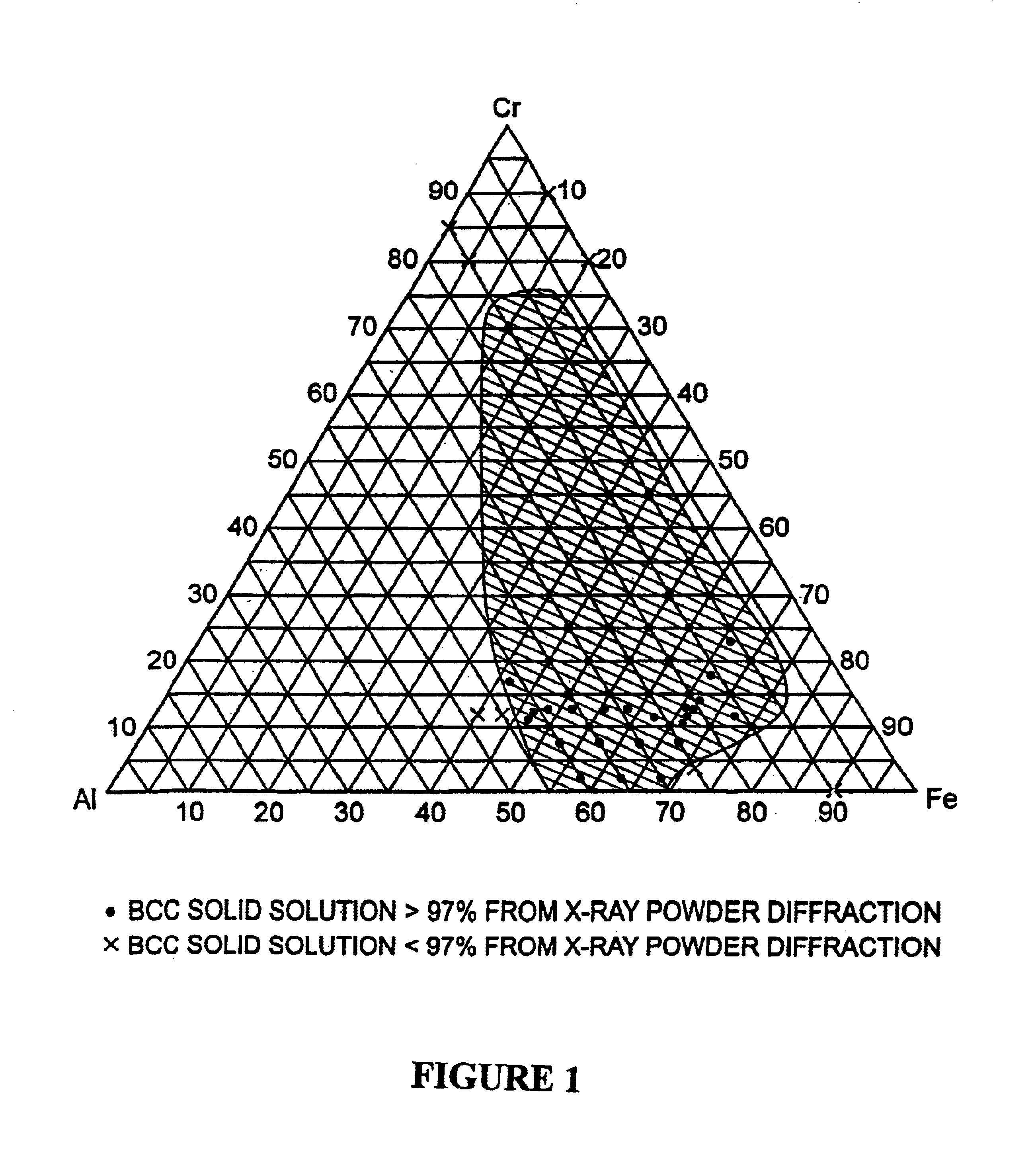Iron base high temperature alloy and method of making
a high temperature alloy and iron base technology, applied in the direction of blade accessories, liquid fuel engine components, machines/engines, etc., can solve the problems of lack of tensile ductility, poor mechanical properties, and inability to achieve the combination of low density, high strength, and good oxidation resistance that is needed for high temperature engineering applications, etc., to achieve excellent mechanical properties and excellent properties in polycrystalline form
- Summary
- Abstract
- Description
- Claims
- Application Information
AI Technical Summary
Benefits of technology
Problems solved by technology
Method used
Image
Examples
example 1
[0048]An Fe—Al—Cr—C article comprising a composition within the range defined in FIG. 1 was prepared by a standard melting technique. The composition was melted under a vacuum to form a molten Fe—Al—Cr—C alloy, which was then poured into a mold having a cavity in the shape of the article. The as-poured mold remained under a vacuum until it was sand-cooled in air to room temperature to form the as-cast article. The-as-cast article was subsequently removed from the mold, and was found to be a Fe—Al—Cr—C body-centered cubic, solid solution having a density of about 6.1 g / cm3.
[0049]The mechanical properties of the as-cast article are shown in Table 1. As can be seen, a material within the present invention exhibits excellent yield and tensile strength up to 650° C., and good ductility, particularly at 900° C.
TABLE 1Mechanical Properties of a bcc Fe—Al—Cr—C alloy0.2% OffsetYieldTensileTemperatureStrength σyStrength σbElongation(° C.)(MPa)(MPa)(%)Room Temp.3605005.32003755805.84003646178....
PUM
| Property | Measurement | Unit |
|---|---|---|
| density | aaaaa | aaaaa |
| temperature | aaaaa | aaaaa |
| temperatures | aaaaa | aaaaa |
Abstract
Description
Claims
Application Information
 Login to View More
Login to View More - R&D
- Intellectual Property
- Life Sciences
- Materials
- Tech Scout
- Unparalleled Data Quality
- Higher Quality Content
- 60% Fewer Hallucinations
Browse by: Latest US Patents, China's latest patents, Technical Efficacy Thesaurus, Application Domain, Technology Topic, Popular Technical Reports.
© 2025 PatSnap. All rights reserved.Legal|Privacy policy|Modern Slavery Act Transparency Statement|Sitemap|About US| Contact US: help@patsnap.com

